King Zygmunt I is a madman - suggested the 16th-century bishop and poet Stanisław Hozjusz. Like many other Poles, he could not understand why the monarch took the tribute from Albrecht Hohenzollern instead of incorporating his Prussian state into Poland.
The Teutonic Order, the bane of medieval Poland, was at the beginning of the 16th century only a shadow of its former power. As a result of the Thirteen Years' War in 1454-66, he lost Gdańsk Pomerania and Warmia. His dominion decreased to the eastern part of Prussia. Malbork also fell into the hands of the Republic of Poland, so the great masters ruled from Królewiec, and they were the followers of Polish kings.
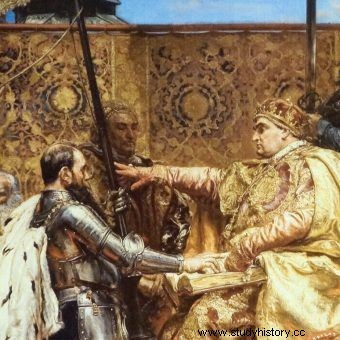
Fragment of Jan Matejko's painting "Prussian Homage".
From 1510, Albrecht Hohenzollern exercised power in the order. The new grand master, son of the margrave of Brandenburg and Zofia Jagiellon, was the nephew of Sigismund I the Old. He gained the position with the approval of his uncle, but he did not intend to submit to him . He was ambitious and strove to maintain an independent position, which could be ensured primarily by the strengthening of the Teutonic state. In the longer term, there was the recovery of lands previously lost to Poland.
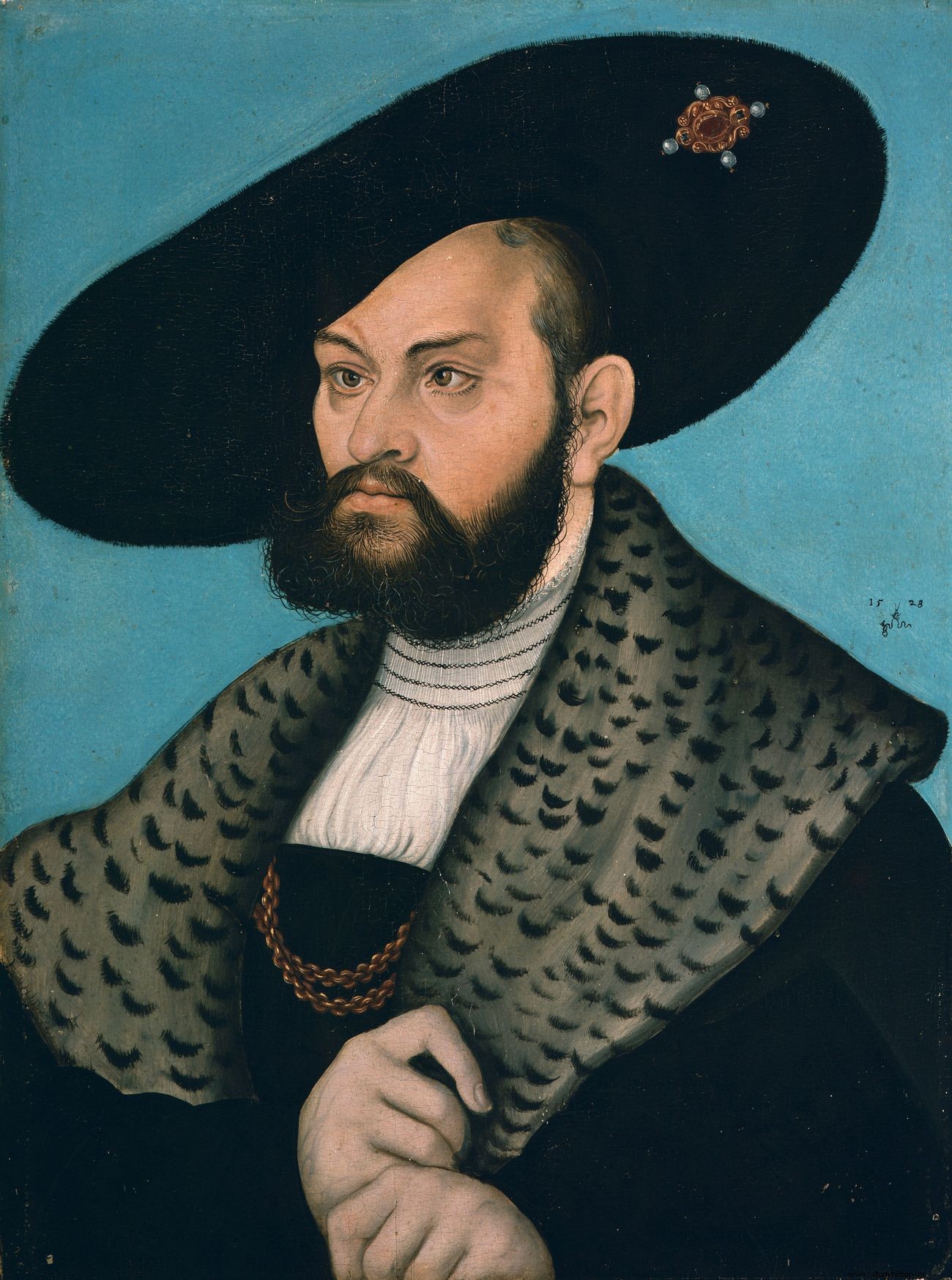
Albrecht Hohenzollern, although he owed the title of Grand Master of the Teutonic Order to the favor of his uncle Sigismund the Old, made an alliance with Muscovite Prince Vasyl III when he was at war with Poland.
Contrary to the provisions of the Toruń Peace in 1466, Albrecht refused to pay the royal fiefdom due to the monarch. He also did not send him reinforcements to the war with Moscow, to which he was obliged. Moreover, in 1517 he concluded a treaty against the Commonwealth with the Grand Duke of Moscow, Vasyl III. They intended to attack Jagiellon together. First, however, the Teutonic Master openly demanded the return of Gdańsk Pomerania and Warmia (i.e. the so-called Royal Prussia) and the payment of 1.5 million guilders as compensation for the 50-year Polish "occupation" of these lands.
Without Jagiellończyk's genes
Angered by these demands and the Teutonic Knights' preparations for an armed conflict, the Polish Seym decided in 1519 to start a war. The Republic unquestionably towered over the enemy in size and population, but the struggle was fought with varying luck. Albrecht was a good commander and despite the Polish advantage he inflicted considerable losses on Zygmunt's troops. He even managed to occupy a bridgehead in Royal Prussia.
Regardless of these successes, it seemed that the Poles would be able to deal a decisive blow to their opponent. After all, the weakened monastic state could not match the power of the Jagiellonians, which was experiencing its heyday at that time. And yet, the long-awaited breakthrough did not happen. Why?
It all started when Zygmunt ran out of money to pay for the mercenary soldiers that formed the basis of the armed forces. Tired troops of the mass army refused to fight any further. Faced with this situation, the king, instead of trying to overcome the crisis by gaining new funds, called for peace negotiations. He asked Emperor Charles V. for mediation.
The Polish ruler probably lacked the willpower that his father, Kazimierz Jagiellończyk, displayed many times. When the latter suffered a humiliating defeat at the hands of the Teutonic Knights in the 1550s, he was determined and, despite the empty cash register, did everything to turn the tide of the war. He forced the introduction of new taxes, pledged the royal jewels and valuables, even forced the bishops to donate church silver for war purposes . Thanks to this, after 13 years of struggle, he defeated the order, taking part of its territory.
Meanwhile, Zygmunt, unable to follow in his father's footsteps, gave up after two years of fighting. And that is why it did not lead to what seemed to be the logical culmination of a conflict over a century old:the final liquidation of the Teutonic state.
"If the Polish king had become wise ..."
Finally, on April 5, 1521, the so-called Toruń compromise was concluded. According to his arrangements, Emperor Charles V and the King of Hungary, Ludwik Jagiellończyk, were to decide within four years whether the Grand Master was obliged to pay tribute to Poland. This meant that, as a result of the war, not only was nothing obtained, but even one of the achievements of Kazimierz Jagiellończyk from half a century ago was called into question! However, Zygmunt was relieved and did not hide it at all. He did not like war, the risks and sacrifices that came with it.
In Krakow, the end of the conflict was trumpeted as a Polish success. On this occasion, a bell, later called "Zygmunt", was hung on the tower of the Wawel cathedral. Nevertheless, people who knew the realities of international politics in the Baltic Sea basin did not believe in these propaganda boasts. They could not understand the attitude of the Polish monarch. As King Christian II of Denmark said:
If the Polish king had wise now and wanted to resume the war with the Prussian master, he would have had no difficulties:[master - ed. M.Sz.] is abandoned by all his friends, no one believes him anymore and the case with Prussia and his fortune is over.

Zygmunt Stary's decision was also incomprehensible to the rulers of the neighboring countries. Among them was King Christian II of Denmark.
In Rzeczpospolita itself, opinions about the settlement with Albrecht were divided. Primate Jan Łaski insisted on fighting further and joining the eastern part of Prussia to Poland. This was due to many representatives of the nobility who supported the continuation of the war until the final victory.
A different position was taken by an influential group of magnates headed by Chancellor Krzysztof Szydłowiecki. It was feared that the calling of a new popular movement would threaten the interests of the richest class. On this occasion, the nobility would probably put forward their anti-Magnanimous political postulates. And it was this option that prevailed. Negotiations with Albrecht and his envoys, which took place, among others, in Nuremberg and Bytom, were conducted by Chancellor Szydłowiecki himself. It was he who established the details of the agreement, which were later presented for approval to Zygmunt I.
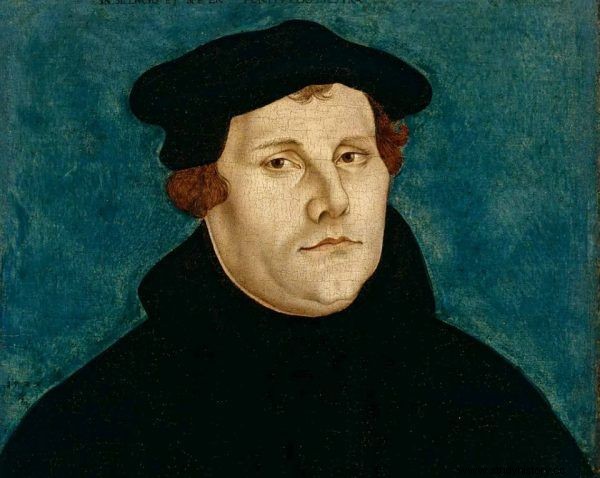
It was none other than Martin Luther who suggested to Albrecht the idea of dissolving the Order and transforming Prussia into hereditary. secular Protestant principality.
The settlement was additionally facilitated by the grandmaster's innovative political concept. He proposed transforming the monastic state into a secular, Protestant hereditary principality. This idea came from ... the creator of the German Reformation himself, Martin Luther during their meeting in 1523 in Wittenberg. Albrecht liked this concept and considered it his own.
Bona looks on with pity
At the end of February 1525, the Seym, debating in Piotrków, called on the king "not to make peace or truce with the law, but to remove him from these lands". Zygmunt I did not intend to follow the opinion of the deputies; the deal with Albrecht had already been agreed. One and a half months later, a relevant treaty was signed in Krakow.
As a result, on April 10, 1525, the Polish king received a solemn tribute from his wayward nephew on the Krakow market square. Albrecht knelt in front of his uncle, dressed to emphasize the importance of the moment in coronation robes, and swore a feudal oath to him. Queen Bona, who watched the ceremony, was amazed at the indulgence of her Polish spouse . Brought up in the Italian tradition of the primacy of raison d'état and ruthless use of the opponent's weaknesses, she was convinced of the need to eliminate the Teutonic Knights.
Meanwhile, under the agreement of Sigismund with Albrecht, there was only a transformation of the monastic domain into a secular Lutheran principality. The grand master ruled it as a hereditary prince. His male descendants were also obliged to pay tribute to the rulers of Poland.
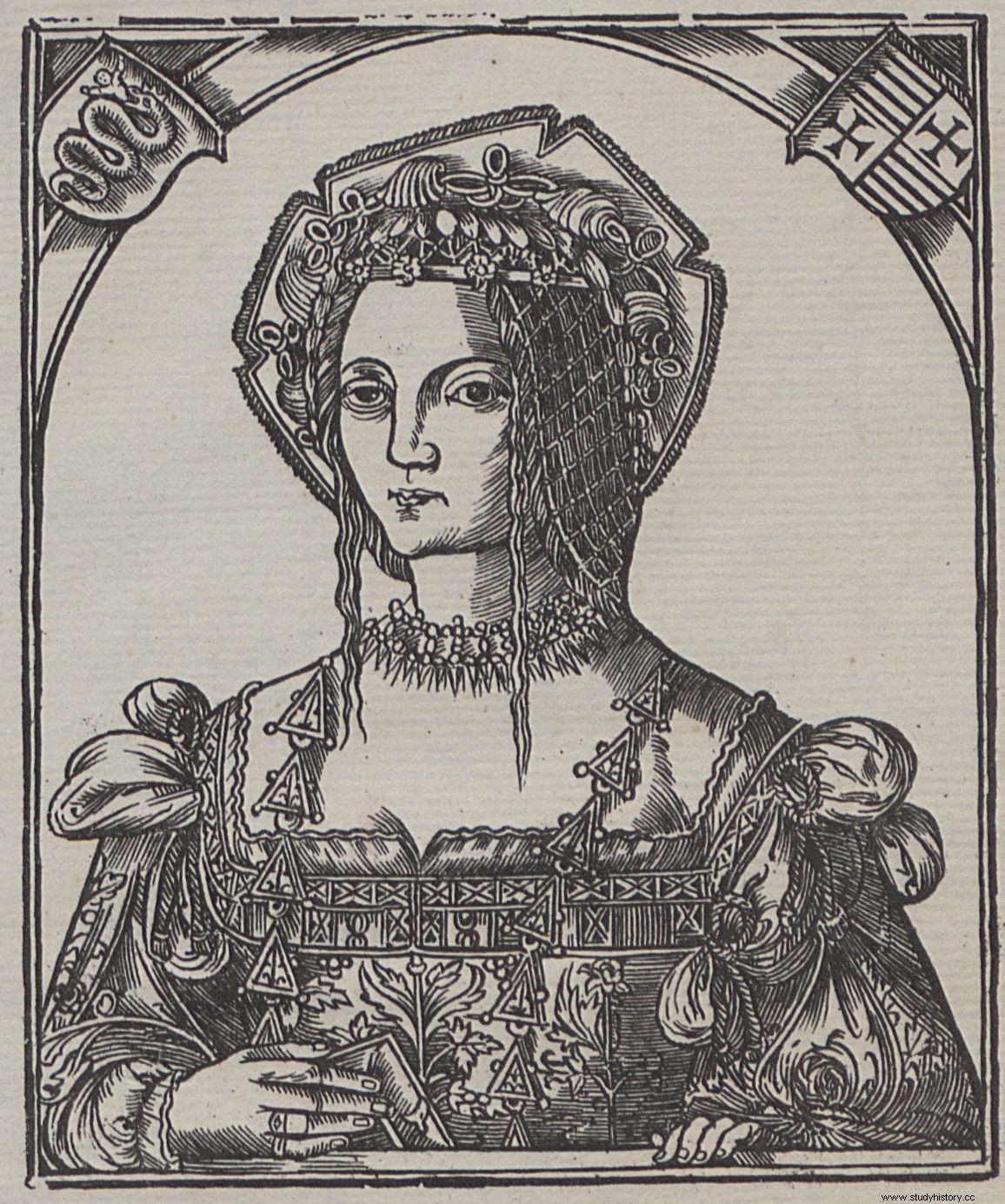
Queen Bona was amazed at her husband's indulgence.
Only relatives of the prince ruling in Brandenburg were excluded from inheritance. Theoretically, this guaranteed that the Hohenzollern lands would not be unified under one scepter, which would mean trapping Gdańsk Pomerania. As we know from history, this guarantee turned out to be very fragile.
Stańczyk futurologist
The Hohenzollerns sensed that their hereditary power over two separate territories offered very interesting prospects for the future. The case began to look even more promising when, at the beginning of the 17th century, King Sigismund III Vasa agreed to allow the Brandenburg line of the family to the succession in Königsberg. As a result, Brandenburg and Prussia found themselves in the hands of one dynasty.
With time, the descendants of the Albrecht family, unsurprisingly, took the two parts of their country together by absorbing Gdańsk Pomerania. At the same time, taking advantage of the Swedish Deluge, in 1660 Frederick William finally freed the Duchy of Prussia from feudal dependence towards Poland. His great-grandson, King Frederick II the Great, led in 1772 to the first partition of Poland, taking over the lands he wanted.
Could the Jagiellonian king have foreseen this development at the beginning of the 16th century? Certainly not. There were many reasons for the collapse and division of the Republic of Poland at the end of the 18th century, and the development of the partitioning Duchy of Prussia at the northern borders of Poland was only one of them. The decisions and omissions of many Polish monarchs, not only Queen Bona's spouse, contributed to the survival and then independence of this state under the rule of one branch of the Hohenzollerns.
Despite these reservations, however, stubbornly arises the idea that Sigismund's failure to take advantage of the chance to liquidate the order was the primary cause of later misfortunes, a mistake that led to all the others. The Prussian homage became a symbol of this error.
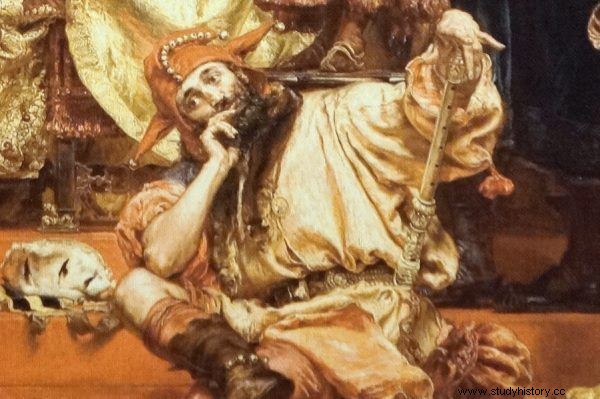
Pensive Stańczyk from a picture by Jan Matejko.
In the second half of the nineteenth century, authors from the historic Krakow school looked at the partitions precisely through the prism of the events of 1525. Jan Matejko was influenced by their work when he painted his famous "Prussian Homage". According to a popular interpretation, the gloomy Stańczyk from the master's painting senses tragic future events, the consequences of the sublime act in which he takes part.
The image of Stańczyk is rather a product of artistic imagination. In fact, the court jester of Zygmunt probably did not think about such a distant future as the end of the 18th century. But even in 1525, it was not necessary to make futurological considerations to see the royal consent to the Prussian tribute as a fatal mistake. Following the usual political instinct, the bishop and poet Stanisław Hozjusz asked in his poem:
Say whoever read these things
So you won't call the monarch crazy
Which can easily end up with a loser,
Your gaze preferred to show him his kind?
Inspiration:
The article was inspired by a biographical novel by Magdalena Niedźwiedzka entitled Bona. Twilight of the Jagiellonians , Prószyński Media 2018.
